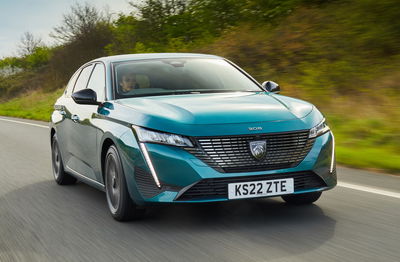VW Multivan Review: Secretly The Best Thing VW Makes

Pros
- Flexible seating arrangementCar-like driving experience
Cons
- Plug-in hybrid powertrain has flawsTypical modern VW tech annoyances
Weirdly, what makes the Volkswagen Multivan so great is – despite the name – it isn’t really a van at all. While Multivans of old (known as the Caravelle in some markets, including the UK) always used to use Transporter vans as a base, the current ‘T7’ version uses VW Group’s MQB Evo car platform, used for everything from the Audi A3 to the Skoda Superb. Meanwhile, the actual VW Transporter is now just a rebranded Ford Transit.
The choice of platform means the Multivan doesn’t really drive like a van at all. It’s quieter and more refined than a van-based MPV. It rides better, even if its large footprint does mean getting jostled around over poor road surfaces is inevitable. It even handles quite tidily, if driven down a country road how pretty much no Multivan owner ever will.

Regardless of its car-based origins, it’s still massively practical. Opening either of the electrically sliding doors and a huge space opens up with seven seats, five of which are on rails, so you can move them about, rotate them 180 degrees, fold them flat or even remove them as you see fit.
The seats are 25 per cent lighter than they were in the old Transporter-based Multivan/Caravelle, but be warned, they range from 23-29kg, so while the process of taking them out is easy enough, it requires a decent amount of upper-body strength. Which I lack…
There’s also a moveable centre console which dramatically rises from the floor, providing two fold-out tables on either side. Have fun telling your kids to stop playing around with it.

The fact that the floor is coated in nice carpet and not hardwearing rubber means it’s not quite a mountain bike dreambus (delete and replace with your chosen hashtaglifestyle pursuit as necessary), but that’s nothing a cheap tarp or two won’t sort. What’s more important is you can leave a couple of the rear seats in place and still have enough room for, say, three bikes (something I tested).
Even with the third row in place, there’s a respectable 469 litres of load space to play with. Up to the second row, you get 1,844 litres, and with all the seats gone, you’re looking at 3,672. The long-wheelbase version holds over 4,000 litres.

We tested the plug-in hybrid version which combines a 1.4-litre inline-four, a 13kWh battery pack and a single electric motor to make for a system power of 215bhp. And so, despite the extra heft of the battery in what’s already a fairly heavy car, this particular Multivan will do 0-62mph in a very respectable nine seconds dead.
It does actually feel pretty brisk at full throttle, but lordy, does that little engine, smooth though it is, make a big deal out of it. The MPG figure for the powertrain is of the usual hilarious PHEV variety - it’s 148.7-156.9mpg, which you’re never going to get without heavily relying on the battery. That, by the way, is supposed to get you just under 30 miles of electric-only running.

With it depleted, you’ll struggle to get beyond 40mpg. The PHEV isn’t actually on sale in the UK currently, and although it’s coming back in 2025, the 2.0-litre ‘TDI’ diesel, as unfashionable as that might be right now, will be a better bet unless you want the plug-in stuff for company car tax reasons.
Along with the so-so economy with a flat battery, the transitions between powertrain sources aren’t always the smoothness, and the six-speed DSG (other models get a seven-speed dual-clutch transmission) isn’t the slickest. To cap it all off, you only get a 45-litre fuel tank, whereas the 1.5-litre and 2.0-litre petrol get a 60-litre tank, and the TDI 58 litres.

Other annoying stuff? Well, it’s a modern VW, which means you have to use a not-particularly-good touchscreen infotainment system to play around with the climate control settings, which is a pain in the arse. It’s also far too easy to accidentally trigger the ‘easy close’ feature for the tailgate, setting off an incessant bong until you get out of the way and the boot actually shuts, even though you never wanted to.
The final point worth bringing up is the price. The range starts at £48,375, which sounds punchy enough, but you can spend as much as £64,561 on the top-spec Mutlivan Style with a 2.0-litre TSI engine, and that's before you add any options.

Then again, big buses like this don’t tend to come cheap. You’ll pay at least £51,300 for a Ford Tourneo Custom, for example, and I don’t think it’s as cool as the VW.
The brand has a long history of making cool vans, and while the Mutlivan is more van-adjacent, it carries on the tradition, even having a couple of lovely looking two-tone paint options, if you’re willing to part with nearly £3,000 for the privilege. And if you want, and if you have even more money to spend, there’s the new Multivan California campervan to consider.
Amidst all the hit-and-miss EVs VW has been producing, the Mutlivan is a bit of a breath of fresh air. It’s so very sensible, so very practical, yet has a bit of desirability going with it. It’s a ‘van’ you might find yourself really wanting to buy, and that’s a feat in itself.















Comments
No comments found.